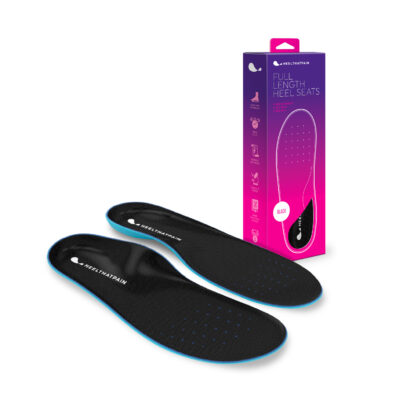Heel Pain Calcaneus
Is heel pain interfering with your life? When calcaneal spurs get bad, they can make working on your feet extremely painful, interfere with your workout routine, and make you irritable or depressed.
The pain may be sharp and stabbing, and may be worse when you walk on hard surfaces or in the morning after prolonged rest.
But here’s the good news:
You’re not alone! One out of ten people have calcaneal heel spurs — and heel spur pain is easy and affordable to manage using stretching, icing, and orthotics.
Causes Of Calcaneal Spurs
When you step, your calcaneus has to support the weight of your body. For an average size person, that weight is approximately 20 times their own body weight. However, the pillow of fat under the foot softens this to help prevent injury.
Unfortunately, it is easy to overload the heel bone even with the body’s natural protection. Neglecting to warm up properly when you work out, over-exercising by sharply increasing the intensity or duration of your workouts, or working long days on a hard surface can injure the muscles of the sole of the foot.
This can cause inflammation of the sole muscles and sinew, and can sometimes crack the sinew.
Once your sinew is cracked, an interesting process occurs. When you sit, the foot muscles will contract to help protect the damaged sinew. However, when you get up, the sinew will crack even more. The body will respond like it to repair a broken bone – basically by wrapping it up in a bone. This results in a small bony projection on the calcaneus, causing heel pain and discomfort.
Symptoms Of An Overloaded Sinew Or Calcaneal Spur
In order to prevent this heel pain from getting out of hand, it is important to understand the symptoms. It is possible that you have an overloaded sinew or a calcaneal spur if you are experiencing the following:
- Sharp, stabbing pain under or on the inside of your heel
- Pain that disappears when you rest, but gets worse when you get up
- It is more painful in the morning
- The pain is worse when you walk on a hard surface or carry something heavy
- The pain is so severe that it is difficult to continue your daily work
Who is At Risk for Calcaneal Spurs?
While a variety of different people can develop heel pain on their calcaneus, certain people are more at risk.
People who are overweight and middle-aged tend to suffer with these heel spurs the most. This is because the size of their fat pillow under their foot decreases and becomes less effective over time. Also, weekend athletes also suffer because they exercise sporadically. Additionally, those who have pronated feet (feet that roll inward while walking or running) are more at risk.
The #1 Treatment for Calcaneal Pain
Most calcaneal spur and sinew injury solutions simply add padding to your shoe, slightly reducing the pressure put on your calcaneus. This can temporarily reduce pain, but is not a long-term solution for heel pain.
Heel Seats are the #1 treatment for calcaneal pain because in addition to re-cushioning the fat pad of the heel, they also apply targeted acupressure to the plantar fascia ligament, reducing the strain on the calcaneus and sinew.







